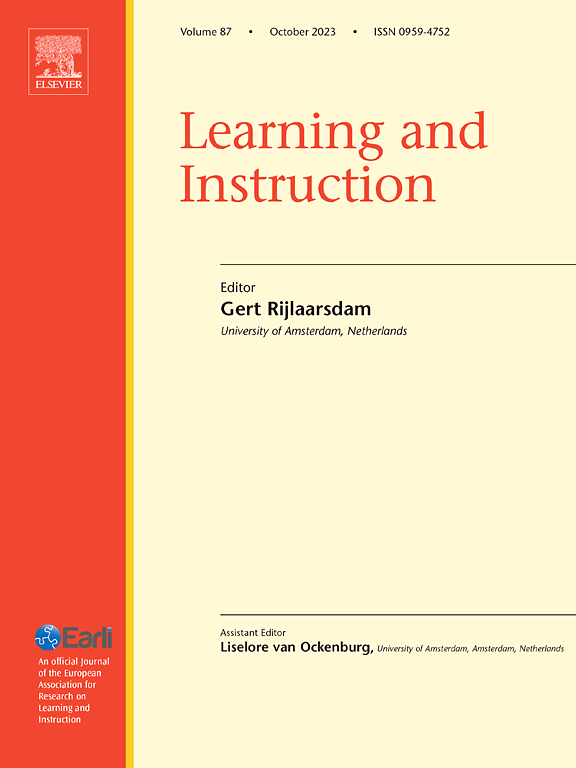From cradle to classroom: Infant-directed speech facilitates word learning in adults learning English as a foreign language
IF 4.9
1区 教育学
Q1 EDUCATION & EDUCATIONAL RESEARCH
引用次数: 0
Abstract
Background
It is suggested that infants acquire novel words better from infant-directed speech (IDS) compared to adult-directed speech (ADS). However, it remains unclear whether this applies to adults who are learning a second language (L2).
Aims
This study investigated the potential benefits of IDS on English word recognition by Mandarin-speaking adult learners of English as a foreign language (EFL).
Sample
Ninety-six participants were pseudo-randomly assigned to IDS, ADS, or lengthened speech (LS) training groups.
Methods
This study utilized a repeated-measures design in which all participants underwent an eight-session training program over a two-week period. Word recognition tasks were administered at four time points: pre-test, mid-test, post-test, and a delayed test conducted two weeks later. To account for individual differences, participants also completed assessments of working memory (digit span test) and English vocabulary size (LexTALE). Data were analyzed using generalized linear mixed-effects models (GLMMs).
Results
IDS group performed better than ADS and LS groups in the mid-test, post-test. More importantly, unlike the other two approaches, the efficacy of IDS on L2 word learning remained in the delayed-test. Additionally, correlation analyses conducted within the IDS group identified a positive correlation between learning gains and elevated pitch values for four-syllable words among the three acoustic exaggerations (pitch, duration, vowel).
Conclusions
These findings suggest that IDS features, particularly exaggerated pitch, facilitate word learning in adult L2 learners.
从摇篮到教室:婴儿导向语促进了作为外语学习英语的成年人的单词学习
研究表明,婴儿定向语比成人定向语能更好地习得新词语。然而,尚不清楚这是否适用于学习第二语言(L2)的成年人。目的本研究旨在探讨语音识别对以普通话为母语的成人英语学习者英语单词识别的潜在益处。96名参与者被伪随机分配到IDS、ADS或延长语音(LS)训练组。方法本研究采用重复测量设计,所有参与者在两周的时间内接受了8次训练计划。单词识别任务在四个时间点进行:测试前、测试中、测试后和两周后进行的延迟测试。为了解释个体差异,参与者还完成了工作记忆(数字广度测试)和英语词汇量(LexTALE)的评估。数据分析采用广义线性混合效应模型(glmm)。结果ds组在测试中、测试后表现优于ADS组和LS组。更重要的是,与其他两种方法不同,IDS对二语单词学习的效果在延迟测试中仍然存在。此外,在IDS组中进行的相关分析发现,在三种声学夸张(音高、持续时间、元音)中,学习收益与四音节单词的音高值升高之间存在正相关。结论:这些发现表明,语音识别特征,特别是夸张的音高,促进了成人二语学习者的单词学习。
本文章由计算机程序翻译,如有差异,请以英文原文为准。
求助全文
约1分钟内获得全文
求助全文
来源期刊

Learning and Instruction
Multiple-
CiteScore
11.30
自引率
4.80%
发文量
109
期刊介绍:
As an international, multi-disciplinary, peer-refereed journal, Learning and Instruction provides a platform for the publication of the most advanced scientific research in the areas of learning, development, instruction and teaching. The journal welcomes original empirical investigations. The papers may represent a variety of theoretical perspectives and different methodological approaches. They may refer to any age level, from infants to adults and to a diversity of learning and instructional settings, from laboratory experiments to field studies. The major criteria in the review and the selection process concern the significance of the contribution to the area of learning and instruction, and the rigor of the study.
 求助内容:
求助内容: 应助结果提醒方式:
应助结果提醒方式:


